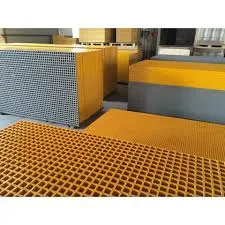
-
 Afrikaans
Afrikaans -
 Albanian
Albanian -
 Amharic
Amharic -
 Arabic
Arabic -
 Armenian
Armenian -
 Azerbaijani
Azerbaijani -
 Basque
Basque -
 Belarusian
Belarusian -
 Bengali
Bengali -
 Bosnian
Bosnian -
 Bulgarian
Bulgarian -
 Catalan
Catalan -
 Cebuano
Cebuano -
 China
China -
 China (Taiwan)
China (Taiwan) -
 Corsican
Corsican -
 Croatian
Croatian -
 Czech
Czech -
 Danish
Danish -
 Dutch
Dutch -
 English
English -
 Esperanto
Esperanto -
 Estonian
Estonian -
 Finnish
Finnish -
 French
French -
 Frisian
Frisian -
 Galician
Galician -
 Georgian
Georgian -
 German
German -
 Greek
Greek -
 Gujarati
Gujarati -
 Haitian Creole
Haitian Creole -
 hausa
hausa -
 hawaiian
hawaiian -
 Hebrew
Hebrew -
 Hindi
Hindi -
 Miao
Miao -
 Hungarian
Hungarian -
 Icelandic
Icelandic -
 igbo
igbo -
 Indonesian
Indonesian -
 irish
irish -
 Italian
Italian -
 Japanese
Japanese -
 Javanese
Javanese -
 Kannada
Kannada -
 kazakh
kazakh -
 Khmer
Khmer -
 Rwandese
Rwandese -
 Korean
Korean -
 Kurdish
Kurdish -
 Kyrgyz
Kyrgyz -
 Lao
Lao -
 Latin
Latin -
 Latvian
Latvian -
 Lithuanian
Lithuanian -
 Luxembourgish
Luxembourgish -
 Macedonian
Macedonian -
 Malgashi
Malgashi -
 Malay
Malay -
 Malayalam
Malayalam -
 Maltese
Maltese -
 Maori
Maori -
 Marathi
Marathi -
 Mongolian
Mongolian -
 Myanmar
Myanmar -
 Nepali
Nepali -
 Norwegian
Norwegian -
 Norwegian
Norwegian -
 Occitan
Occitan -
 Pashto
Pashto -
 Persian
Persian -
 Polish
Polish -
 Portuguese
Portuguese -
 Punjabi
Punjabi -
 Romanian
Romanian -
 Russian
Russian -
 Samoan
Samoan -
 Scottish Gaelic
Scottish Gaelic -
 Serbian
Serbian -
 Sesotho
Sesotho -
 Shona
Shona -
 Sindhi
Sindhi -
 Sinhala
Sinhala -
 Slovak
Slovak -
 Slovenian
Slovenian -
 Somali
Somali -
 Spanish
Spanish -
 Sundanese
Sundanese -
 Swahili
Swahili -
 Swedish
Swedish -
 Tagalog
Tagalog -
 Tajik
Tajik -
 Tamil
Tamil -
 Tatar
Tatar -
 Telugu
Telugu -
 Thai
Thai -
 Turkish
Turkish -
 Turkmen
Turkmen -
 Ukrainian
Ukrainian -
 Urdu
Urdu -
 Uighur
Uighur -
 Uzbek
Uzbek -
 Vietnamese
Vietnamese -
 Welsh
Welsh -
 Bantu
Bantu -
 Yiddish
Yiddish -
 Yoruba
Yoruba -
 Zulu
Zulu
frp fittings
Understanding FRP Fittings A Comprehensive Overview
Fiber Reinforced Polymer (FRP) fittings have emerged as a crucial component in various industries due to their exceptional properties and versatility. These fittings, made from a composite material that includes a polymer matrix reinforced with fibers (such as glass, carbon, or aramid), are known for their lightweight, high strength, and resistance to corrosion. This article delves into the significance, applications, and advantages of FRP fittings.
Understanding FRP Fittings A Comprehensive Overview
The versatility of FRP fittings allows for a wide range of applications. In the construction industry, they are commonly used for piping systems, structural components, and reinforcing elements in buildings and bridges. Their resistance to chemicals and environmental degradation makes them suitable for various sectors, including oil and gas, aerospace, and automotive. Additionally, FRP fittings are increasingly finding their way into renewable energy projects, such as wind turbine blades, where lightweight and durable materials are essential for efficiency.
frp fittings

Another significant advantage of FRP fittings is their design flexibility. These fittings can be molded into complex shapes and sizes, allowing for creative solutions tailored to specific project requirements. This adaptability extends to manufacturing processes, where FRP fittings can be produced using various techniques such as pultrusion, vacuum infusion, and hand lay-up. As a result, custom solutions can be developed quickly and cost-effectively.
The longevity of FRP fittings also contributes to their increasing popularity. The materials used in FRP composites are resistant to UV rays, moisture, and corrosive substances, translated into longer service life compared to traditional materials. This durability minimizes maintenance needs and replacement costs, providing significant savings over time.
In summary, FRP fittings represent a significant advancement in material technology, offering benefits that traditional materials often cannot match. Their lightweight nature, corrosion resistance, design versatility, and long lifespan make them an attractive choice across multiple industries. As the demand for efficient, sustainable solutions continues to rise, the use of FRP fittings is poised to grow, making them a vital component in the future of engineering and construction. Embracing these innovations not only enhances project outcomes but also contributes to more sustainable practices in various sectors.
Latest news
-
Exploring the Benefits of Top Hammer Drifter Rods for Enhanced Drilling PerformanceNewsJun.10,2025
-
High-Precision Fiberglass Winding Machine for GRP/FRP Pipe Production – Reliable & Efficient SolutionsNewsJun.10,2025
-
FRP Pipes & Fittings for Shipbuilding - Corrosion-Resistant & LightweightNewsJun.09,2025
-
Premium FRP Flooring Solutions Durable & Slip-ResistantNewsJun.09,2025
-
Premium Fiberglass Rectangular Tanks Durable & Lightweight SolutionNewsJun.09,2025
-
Tapered Drill String Design Guide Durable Performance & UsesNewsJun.09,2025









